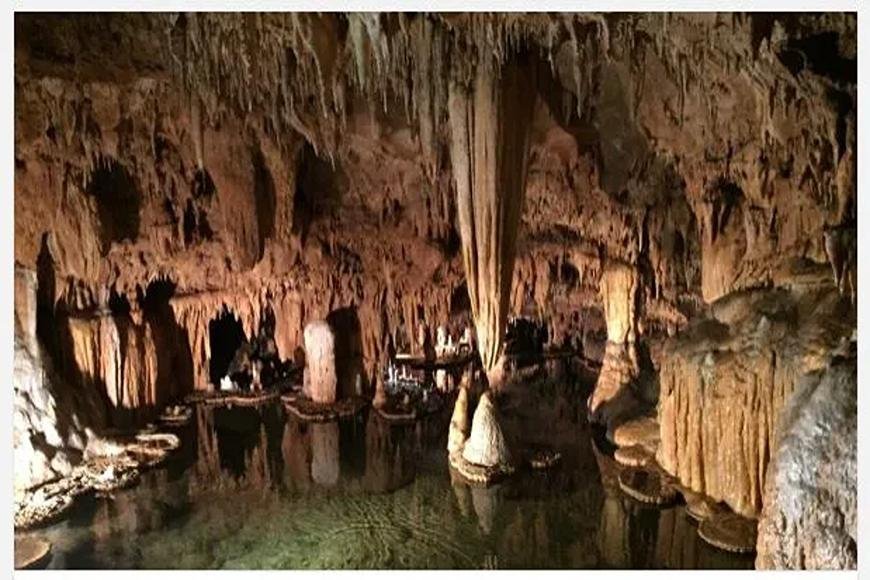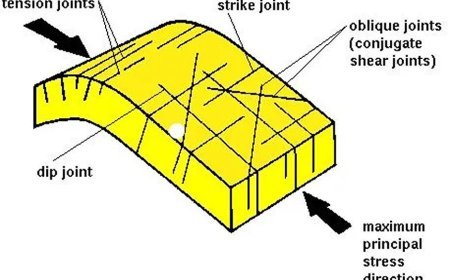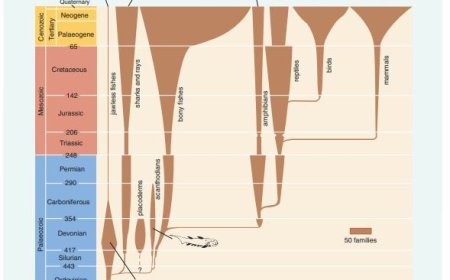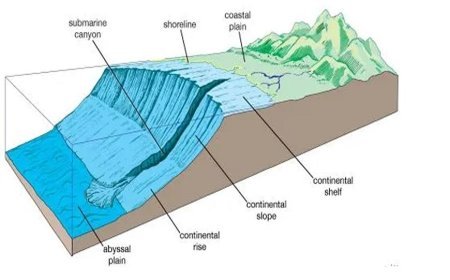KARST TOPOGRAPHY AND ITS FEATURES
Karst landscapes: Acidic water dissolves limestone, carving sinkholes, caves, and dramatic rock formations.

KARST TOPOGRAPHY
- Limestone used to be found in ancient rocks. Calcite, or calcium carbonate, is what limestone is made of when it is pure.
- Dolomite is the name for the rock that has magnesium in it. It breaks down in the rain.
- These factors are needed for karst topography to form:
- Karst topography happens in places with a lot of rocks that dissolve in water.
- The limestone should be on the ground and on the surface.
- The limestone shouldn't be porous in that area.
- The rock layer should be dense, with no gaps between the rocks.
- The low water table and a constant source are two important features of Karst topography.
- The area shouldn't get much rain. Heavy rain breaks down rocks.
Features of Karst Topography
Sinkholes
Valley Sinks, or Uvalus
Caves insections
Swallow holes in sections
Swallow Hole in Section
- Both groundwater and surface water will drop out of the hole. Ponor and Serbo-coat are other names for the swallow holes on this page.
Cave in Section
- Rocks get holes in them when strong surface water flows over them. Erosional forces caused the hole to form.
Sinkholes
- A sinkhole is a hollow in the rock. Change from flat saucer shapes to funnel shapes or cylinder-shaped pipes. Part of the rocky landscape is this kind of thing.
- The hole should be between 3 and 9 metres deep on average.
Valley sink or Uvalas
- A valley sink gives way to a very wide hollow.
Karst Landforms
- Chalk is what makes up karstic landscapes. It lives in the Karst areas of the Balkans, right next to the Adriatic Sea.
- Karst formations are one of the most important things that can happen in limestone or dolomite areas.
- Made by groundwater acting on it.
- By the processes of solution and deposition.
- It's crucial that the rocks allow water to pass through them, that the arrangement is well-thought-out, and that there are no surface drainage systems present so that the underground drainage system can drain the water.
- Once the rocks are deep enough, the water starts to move horizontally after moving vertically.
- This horizontal movement lets the water flow through the bed planes.
- The water also runs through the gaps and all the materials on their own.
- Water moving down and side to side, chemical processes of solution and precipitation, surface water, and groundwater all wear away rock, and landforms created in the Dolomites region are rich in calcium carbonate.
Karst Erosional Landforms
Sinkhole
- It happens when rain hits a weak spot in the limestone.
- Sinkholes are depressions in the limestone.
- They can change from shallow saucer shapes to funnel-shaped or cylinder-shaped pipes. They are a common feature in karst landscapes.
- Sizes range from square metres to hectares.
- The average depth of a sinkhole is between 3 and 9 metres.
- The hole size will keep growing because of the constant action of solvents.
Doline
- Another name for it is a colony sink.
- Karst terrain doesn't have it as often.
Uvalas
- The depression looks like long, narrow, or wide ditches. It's also known as a valley sink.
- The uvala is formed when the solution sink and the collapse sink join together. It could cause a bigger depression.
Lapies or Karren
- It happens because of different solution cations at the parallel and sub-parallel joints.
- The lanes may make it possible for smooth limestone sidewalks to change.
- Lapies are shapes that look like grooves, flutes, or ridges.
Limestone Topography
- Limestone pavements are flat surfaces covered with limestone.
- They are one type of natural karst landform that looks like man-made platforms.
- Through solvent action, the limestone gradually gets bigger and wider.
- This causes cracks to form in trenches. "Grikes" refer to the widening of joints, and "clints" refer to separate, rectangular blocks.
Rocks and caves
- It happens more often in places where there is limestone between the rocks or where the limestone is very big and thick.
- Caves are formed when water moves horizontally through cracks or joints.
- The water filtering along the bedding planes helps the caves get bigger.
- The limestone dissolves between the planes, making holes. This space is called a cave.
Polije
- It is a huge depression with a flat floor that forms when valley sinks join together or when faults happen.
- It is most common in tropic and subtropical latitudes, but it can also be seen in temperate and boreal regions.
- Thick segments that are fertile and cover dry areas are available for farming.
Ponor
- A naturally occurring opening surface that is below the pit is thought to be a way for lake and surface water to enter the karst groundwater system.
Shapes of land In light of deposits
- The main thing that causes the accumulation in Karst terrain is calcium carbonate.
- When the solution is too full and there is a lot of evaporation, it dissolves and starts to settle out.
The most interesting things about landscapes are
Stalagmiters
Ice stalactites
The Bases
Stalactites
- These structures hang from the cave roofs and come in a range of forms, such as sharp, thin, and different sizes.
- It's wide at the base and narrow at the ends.
- When lime and water mix, the water evaporates, leaving behind solid calcium carbonate.
Stalagmites
- It forms when water drips from a thin pipe. When water drips from the roof, it makes stalactites, and when it drips from the ground, it makes stalagmites.
- Stalagmites can be shaped like a column or a disc.
- They can have a smooth, rounded, bulging end or a small hole that looks like a crater.
Pillars
- This shape forms when stalactite and stalagmite join together.
- It looks like a column and comes in different sizes.
- All the different parts of karst terrain have been talked about.
- These include erosional structures like pools, sinkholes, lapies, limestone pavements, caves, collapsed sinks, and more.
- Additionally, we observed stalactites, stalagmites, and pillars, which are examples of deposits-formed karst terrain.
What's Your Reaction?



































